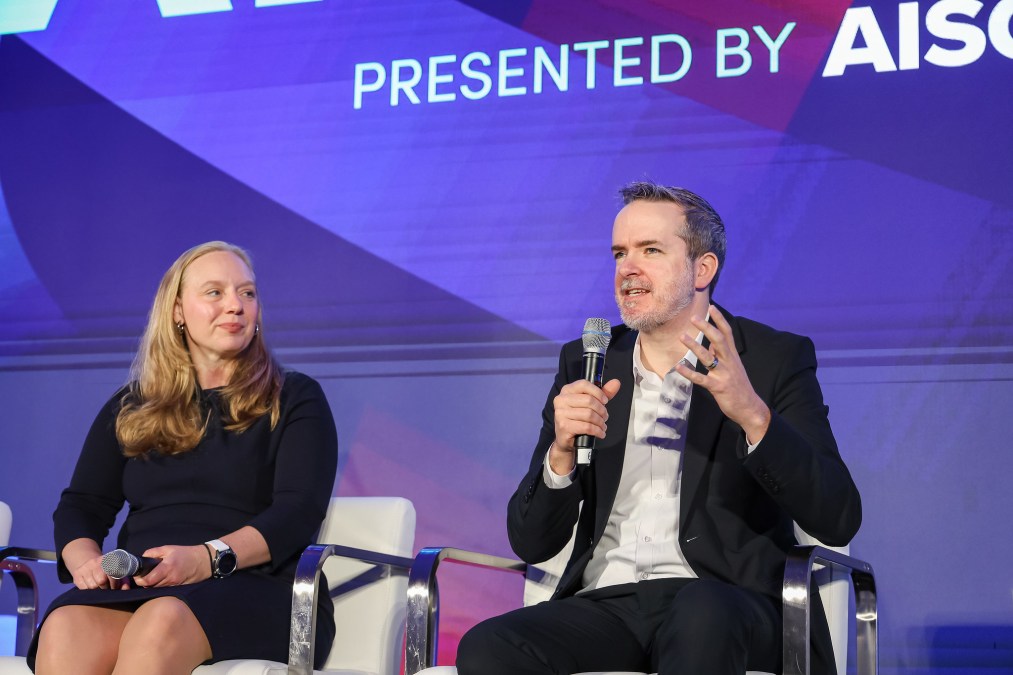Former State Department data, AI leader Graviss joins Atlassian

Australian-based software company Atlassian has tapped Matthew Graviss to be its first public sector chief technology officer following his recent departure as the State Department’s top data and AI official.
Although the role starts a new private sector chapter in Graviss’s career, being the first person to establish a newly created position is familiar ground. During his time in the federal government, Graviss was the first-ever chief data officer at both the State Department and the Department of Homeland Security’s U.S. Citizenship and Immigration Services.
In an interview with FedScoop, Graviss said his role at Atlassian is an extension of that experience in that he’ll again be codifying the responsibilities of the job, showing value and solving customer problems.
Regardless of whether his role is in or out of the government, Graviss said “the delivery of better goods and services to citizens is contingent upon … an ecosystem of government employees, service providers, and solution providers.”
“I’m still part of that ecosystem,” he added
Graviss joins Atlassian after nearly four-and-a-half years as the chief data officer and chief AI officer at the State Department and a combined 17 years in federal government. Prior to the State Department, Graviss held several roles in the Department of Homeland Security, including his USCIS position and roles at Transportation Security Administration and U.S. Customs and Border Protection.
But Graviss said he was ready to try the next challenge and began exploring a new role in September. He landed on Atlassian because of its growing focus on the public sector. The company, known for coworking tools like Jira, Confluence, and Trello, has been “doubling down on investment in the public sector over the last couple of years,” he said.
Atlassian’s recent work on its public sector arm has included making progress toward getting “moderate” authority to operate its products under FedRAMP, the government’s security assessment process for cloud tools, as well as committing to FedRAMP “high” and the Department of Defense’s Impact Level 5, he said.
It’s also scaling its public sector team, he said, and the new CTO role for that work is “a signal that, in and of itself, that the company’s investing a lot more in the public sector.”
In a written statement provided to FedScoop, Scott Blacker, Atlassian’s head of global solutions, said that bringing Graviss into the leadership team at the company “is an important step as we continue to expand our impact in the public sector.”
“His deep expertise in AI, data, and public sector technology will be invaluable as we work to help government agencies modernize, collaborate, and drive mission success,” Blacker said.
Reflecting on his time in government, Graviss counted his recent efforts to build the State Department’s data governance and its adoption of AI into the agency’s global mission among his proudest accomplishments.
“The mandate was data-informed, AI-assisted diplomacy,” Graviss said of his former role.
That work included becoming the first cabinet-level agency to set up a departmentwide AI chatbot, which it calls StateChat, along with the adoption of other AI tools that range from searching the Foreign Affairs Manual to summarizing news stories from around the world. It also included producing State’s first AI strategy and establishing the Center for Analytics as the agency’s hub for data and AI.
“We established data governance for the first time at the Department of State,” Graviss said. “We built out a tech team and a tech platform that undergirds … all of the data and analytics and AI work.”
Graviss said when he first got to State, there were little more than spreadsheets to use from a technology standpoint. Now, the department has a multi-cloud technology team and platform for the whole department, and through that team, the department was able to create those efficiencies. StateChat, for example, was built in roughly six months and launched to 80,000 people.
Another part of that work Graviss noted as an accomplishment was the creation of bureau chief data officers within the department to bring data leadership and strategy to the individual bureau level. In addition to having a CDO for the entire department, the agency also now has over 20 bureau CDOs, who “in their own accord, are building evidence, driving motions within their bureaus, and sitting at the decision making table.”
“That’s where we want data and AI leaders to be is alongside these decision-makers, driving evidence-based diplomatic decisions,” he said.
That data and AI work had directly impacted diplomacy, including having data professionals as an important part of State Department missions.
A couple of years ago, he said, the department “put a data scientist on the plane to go rescue 222 Nicaraguan political prisoners.” Doing something like “that certainly never would have been thought of several years ago,” Graviss said, and it improved the mission’s efficiency.
Those are the stories that Graviss said he’ll be taking away from his time at the department.
“When I get back together with colleagues across the State Department, those are the things that are going to stand out because that’s ultimately what mission support is, is supporting actual mission impact and changes,” he said.
Ultimately, Graviss said the State Department seems technology forward-leaning for the first time in its history. “Data and AI are now fundamental to the way the State Department operates, and now we have the right people and processes in place to carry that forward,” he said.
Graviss’s departure comes at a time for change in how the government approaches the use of AI tools. The Trump administration rescinded Joe Biden’s executive order on the technology and is currently reviewing the AI actions under the previous administration to see specifically what it might want to get rid of or leave in place.
Despite those changes, Graviss said some AI practices will stick around because they’re good management practices irrespective of an executive order. That includes inventorying AI and developing sound data management practices for the technology — a crucial component of AI governance. In fact, he noted that State’s AI strategy was in the works before Biden’s order directed agencies to create such a plan.
“I think a lot of those things are going to continue because it’s good practice, not because … somebody told us that we had to,” Graviss said.






